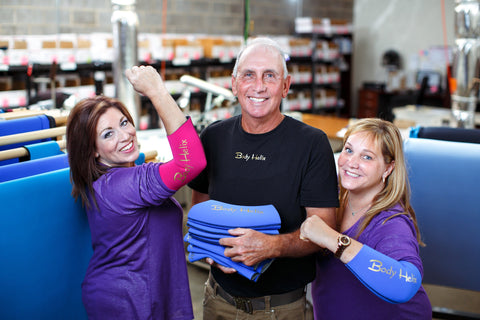Is Kiniseo Tape an Effective Method of Injury Management?
Over the past several years, I have noticed many athletes wearing colorful Kiniseo Tape on different parts of their bodies for injury management and often wondered about the effectiveness of this treatment. Based on anatomy, normal physiology and the known physiology of injury repair, I couldn’t seem to make any sense of the benefit.
However, always having an open mind about the advances in science, I decided to research if any evidence supports the use of skin tapes for injury management and pain control. Please note there is a clear distinction between the use of tape, such as athletic adhesive tape that might be used to tape an injured ankle, and the tapes applied to the skin, such as Kinesio Tape and its imitators.
After researching the findings of several studies that evaluated the use of skin taping, I have found there to be no scientific evidence of significant benefit.1 However, if we look at the physiology reported to occur with Kiniseo Tape, it is noted that there is increased proprioception (the concept of knowing where your body is in space and the ability to safely maneuver around your environment) that is indeed beneficial. Unfortunately, this is the only benefit worth noting when it comes to effective management of injuries with Kiniseo Tape.
Proponents of Kiniseo Tape often report that the “lifting” of the skin, much as you would see if you pinched the skin on the back of your hand and lifted it up, is an advantage to using this method. This claimed benefit of the “lifting” effect is the creation of a negative pressure allowing both blood vessels and lymphatic vessels to dilate (open), increasing circulation of both fluids. However, the most fundamental understanding of fluid dynamics and tissue pressure concludes that the negative pressure that causes an increased fluid accumulation is undesirable since it could allow injured tissues to be decompressed and delay the effective repair process.
 Consider this example to further explain my thoughts: When thinking of the muscles and tendons in our bodies, consider how they are made of fibers, much like how a broom is actually made of multiple “broomsticks.” When the individual broomsticks are separated, they are in turn, not as strong as when compared to broomsticks that are compressed together. Similarly, in the body, keeping the tissues that need to be repaired close together will decrease fluid accumulation and will improve the healing process.
Consider this example to further explain my thoughts: When thinking of the muscles and tendons in our bodies, consider how they are made of fibers, much like how a broom is actually made of multiple “broomsticks.” When the individual broomsticks are separated, they are in turn, not as strong as when compared to broomsticks that are compressed together. Similarly, in the body, keeping the tissues that need to be repaired close together will decrease fluid accumulation and will improve the healing process.
Another way to envision this process is to consider how a gaping cut on your skin will heal faster if the wound is sutured together versus if it is left open. The same premise applies internally to our injured muscles and tissues. Compressing them gives them the potential to be stronger and heal faster. Whereas, Kiniseo tape actually does the opposite effect by pulling them apart, causing a possible increase in swelling and a slower recovery process.
The benefit of wearing a compression sleeve compared to applying Kiniseo Tape, though, is clear since the compression will help to reduce swelling, will compress the damaged tissues so that they have the potential to be stronger, and will increase proprioception as well.
There is no disputing that the colorful and artful patterns that are seen with the use of Kinesio Tape is quite decorative. However, based on the research available, compression sleeves and wraps are a much more effective use of injury treatment. Fortunately for athletes who are looking to make a fashion statement in addition to effectively treating their injuries, Body Helix compression wraps are also available in a variety of styles and colors too. To learn more about compression and how it could help you treat your injury, click here.
1.http://www.journalofphysiotherapy.com/article/S1836-9553(14)00009-5/abstract?cc=y=
https://www.ncbi.nlm.nih.gov/pubmed/22124445
https://www.ncbi.nlm.nih.gov/pubmed/23306413
Learn, Share, Inspire.



